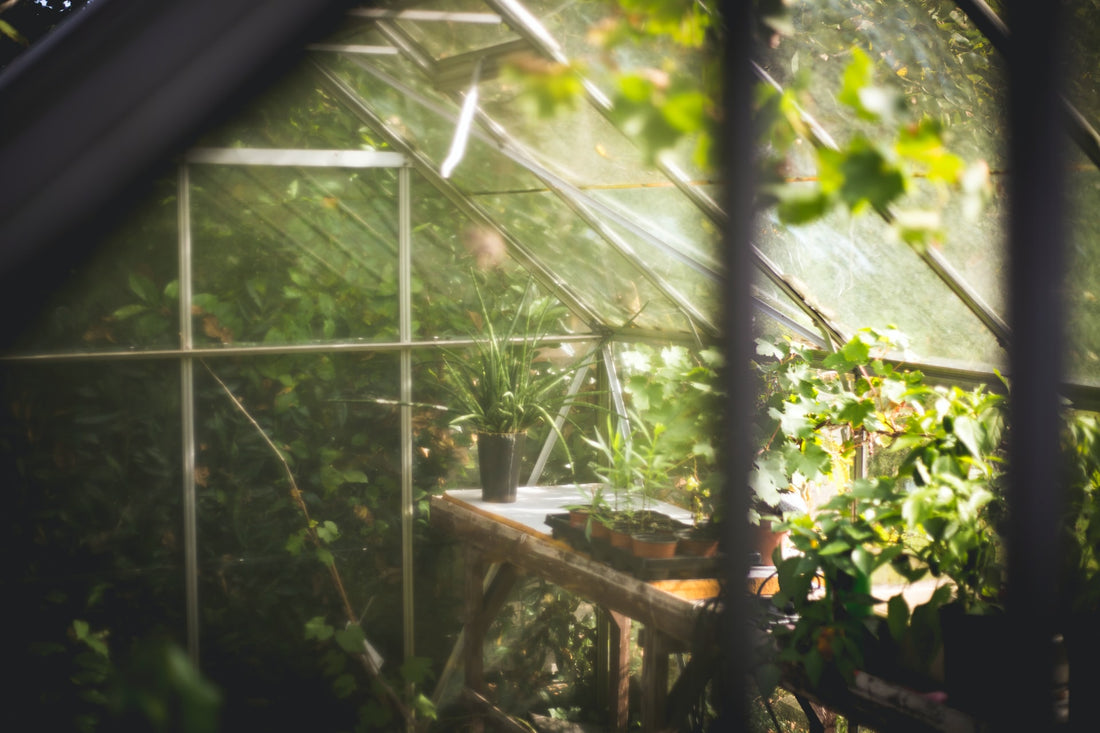A greenhouse is invaluable to any gardener. Greenhouses extend growing seasons, provide extra space for plants, and supply specific microclimates a plant may need. Unfortunately, good greenhouses are expensive.
There are many inexpensive options on the market, but their quality and usefulness are lacking. It isn't hard to build a greenhouse, though, and the best part is you can design it to your own specifications.
How to Build a Greenhouse
Before starting to build your greenhouse, there are some things to consider. The type of greenhouse you want will determine how you go about building it. Planning is everything!
Type & Size
A greenhouse has no one size or style. Portable cold-frame structures placed over specific plants are a type of greenhouse. The attached greenhouses use the side of a preexisting building as a wall. Before deciding which greenhouse to build, consider these factors:
- How often do you intend to use the greenhouse?
- Is it for starting seeds at the beginning of the season or for specialty plants throughout the year?
- What will you use the greenhouse for? Twenty rose plants have entirely different requirements than early-spring vegetable seedling starts.
- Will you wire it for electricity? Or will it rely on the sun for heat and light
- How much space do you have? And do you have a specific location in mind?
Orientation
A greenhouse works best facing south or southwest. This allows the most sun and light to enter. A greenhouse should get at least six hours of sun per day. In some regions, an east-facing greenhouse is an option, as well. Build it away from trees or potential sources of shade.
Ideally, the greenhouse is located near a water and electricity source.
Weather Considerations
Folks in snowy areas must build a greenhouse that can withstand the weight without collapsing. This is quite significant in some areas and may require an A-frame or attached greenhouse.
Materials
The classic window material used in greenhouses is glass. This is only because it is what was available when greenhouses were first being built. Glass works well yet has several significant downsides. It is incredibly breakable, heavy, and expensive.
Modern greenhouses generally use polycarbonate, fiberglass, or polyethylene plastic sheeting. Each of these has its' pluses and minuses, as well.
Polycarbonate is a rigid, transparent plastic and is an excellent stand-in for glass. It provides excellent insulation, is long-lasting, and is easy to install. It is also expensive.
Fiberglass is less costly. However, it doesn't last as long. Polyethylene sheeting is inexpensive and easy to install, yet generally only lasts 2-3 seasons before needing to be replaced.
Venting
A greenhouse is meant to keep heat in; however, it can quickly become overwhelming to the plants if not monitored. Automatic vents are the best and not too tricky to install. A sun-soaked winter day can quickly turn the greenhouse into a sweltering inferno for the plants.
The 4 Main Types of Greenhouses
Lean-To or Attached
This greenhouse uses the side of another building as one of its' walls. It reduces construction needs and also has the benefit of being near electricity. Additionally, it should provide better heat retention than a stand-alone variety. The biggest downside is that the size and height of the preexisting wall limit the size of the greenhouse. These are an excellent choice for a limited budget.
Freestanding
A greenhouse that stands on its' own has limitless possibilities. It can be small, large, rounded, A-frame, or arched. The choice of building materials is also very open for this type. A downside is that accommodations need to be made for conveying water and electricity.
Hoop House
Like a traditional freestanding greenhouse, these are separate structures. However, they use polyethylene sheeting as a covering. This makes them easily movable and removable and are a great beginner greenhouse. A big downside is that the sheeting deteriorates over a few years and will need regular replacement.
Hoop houses are often built directly in the preexisting garden. Venting is done by rolling up the plastic sides. They are not as durable during storms as other securely framed greenhouses.
Cold-Frame
This simple structure is placed over specific plants or sections of the garden. It is a bottomless box with a glass or plastic cover that opens for easy venting. Generally, they are small and used to protect plants from inclement weather.
Cold-frames are the simplest and least expensive greenhouse and a great DIY project. The downside is their size and, relating to their size, how quickly the interior can become too hot for the plants. They need frequent monitoring.



